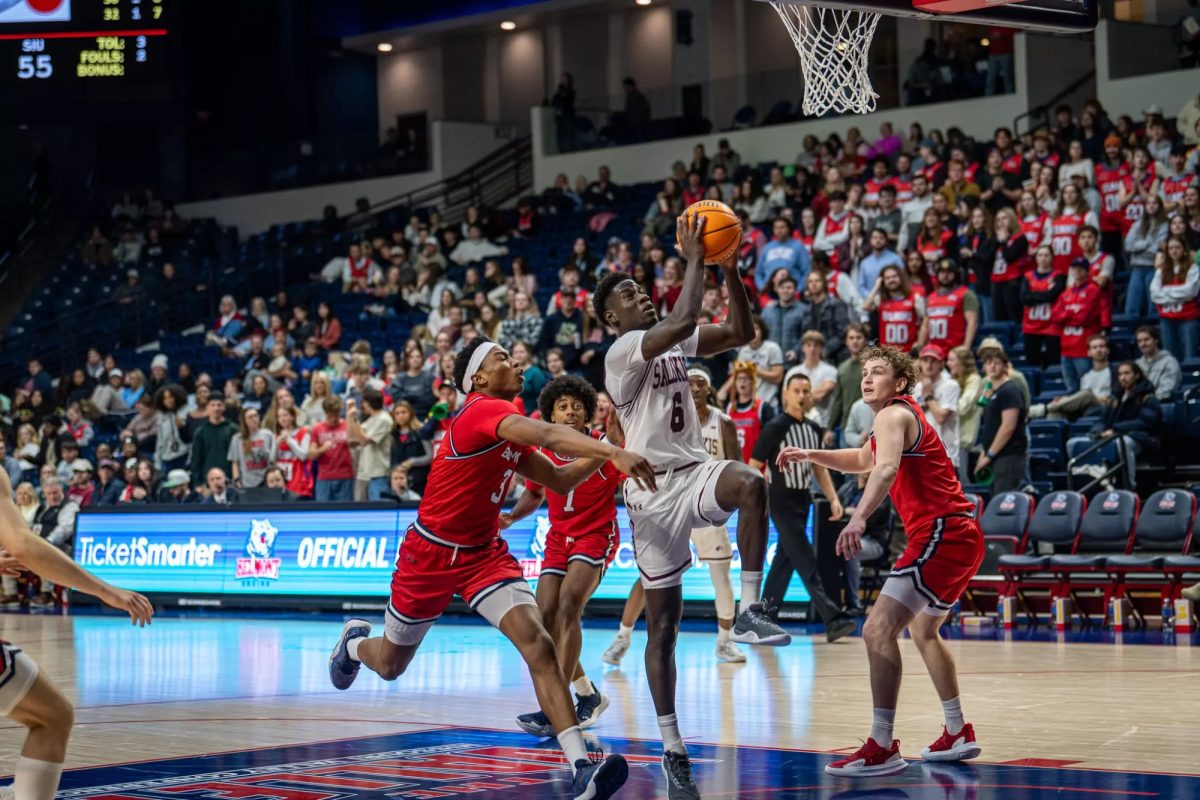Opinion: Less-than-studious students driving up college costs for all
Solar Bear partygoers prepare to jump off a roof into the pool Saturday, Aug. 27, 2016, at The Reserve at Saluki Pointe. (Branda Mitchell for DailyEgyptian.com)
September 2, 2016
As college students head back to school, parents and taxpayers — both groups increasingly subsidizing higher education — rightfully expect these students will work hard to make the most of this significant investment. Unfortunately, data from the American Time Use Survey, conducted by the U.S. Bureau of Labor Statistics, indicate otherwise.
During the academic year, the average full-time college student spends only 8.3 hours per week in class and 11 hours per week on homework and other education-related activities. By contrast, the average high school student spends 23.9 hours per week in class and 6.3 hours per week on homework and other activities.
Considering how little time college students put into their studies, it is no surprise that nationwide, less than 19 percent of full-time students attending non-flagship public universities and 36 percent of full-time students attending flagships earn their bachelor’s degrees within four years.
Advertisement
Many aren’t even trying to finish in a timely fashion. A study by researchers from Northwestern University suggests, “Most full-time students do not take the credits necessary to graduate on schedule … opting instead for lighter course loads that put them on five- and six-year plans.” Many also fall behind by losing credits when transferring and taking remedial coursework.
If college students were spending most of their time in college leisurely, graduating in six years, but financing their education on their own, the repercussions of this trend would be contained to individuals. However, students are able to borrow up to the “full cost of attendance,” which includes tuition, fees, room and board, books, and other miscellaneous living expenses. And the federal government now controls 93 percent of all student loans, 43 percent of which are either in default or delinquent.
Additionally, the Obama administration promulgates legislation that would offer loan forgiveness to students who enter the public sector. Unfortunately, these misguided policies leave taxpayers on the hook for a student’s college years, only a fraction of which is spent acquiring skills.
Worse, research has shown that increased access to federal aid encourages colleges and universities to raise their tuition prices. So while access to federal aid increases, so do tuition costs, and the time spent working in college remains extremely low. This is a bad deal for American taxpayers.
A better option is to restore private lending in the marketplace. We need to rein in the virtually unrestricted access that students have to federal student aid.
Reversing the incentives for colleges and universities to raise their tuition prices would make it easier for more students to pay for college without government assistance.
Once students, rather than American taxpayers, are held financially responsible for their time spent in college, students may spend less time partying and more time studying.
Advertisement*
___
(c)2016 The Heritage Foundation
Distributed by Tribune Content Agency, LLC.
Advertisement









